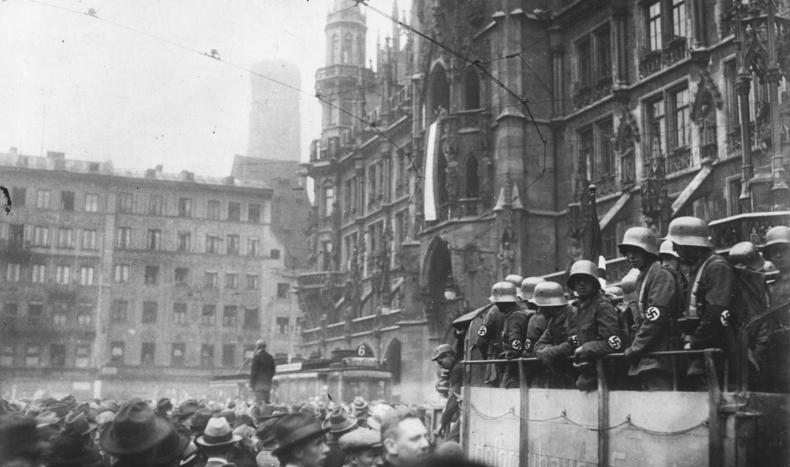One century ago, on November 9th 1923, Adolf Hitler, the leader of the National Socialist German Workers’ Party (NSDAP), attempted to take over power in Germany when he initiated a coup d’etat against the central government. Following Mussolini’s example, Hitler attempted to march on Berlin from Munich, the capital of secessionist Bavaria. Trying to exploit wide-spread hostility among Bavarians towards rule from Berlin, Hitler hoped that Bavarian-led army corps as well as right-wing militias would join him on a march to Berlin to depose the “the Berlin Jew government and the November criminals of 1918.”
On the evening of November 8th, members of the Sturmabteilung (SA), the armed wing of the NSDAP, kidnapped several members of the Bavarian cabinet while Hitler and his co-conspirators detained Bavarian military leaders in a beer hall. Other members of the Bavarian cabinet escaped and called for resistance against the putsch. During the night, the Bavarian military leaders abandoned Hitler’s coup attempt. In the morning of November 9th, Hitler and his co-conspirators marched to the city center in Munich in the hope of rallying the population. A shoot-out with soldiers loyal to Berlin resulted in the death of one by-stander, four soldiers, and more than a dozen supporters of Hitler.
Hitler initially escaped but was later caught and tried for treason. While the NSDAP was banned in Germany, Hitler used the ensuing trial to portray himself as a defender of the German nation, and gained national recognition. Moreover, the presiding judge had sympathies Hitler, who was able to leave prison after just more than eight months. The Beer Hall Putsch brought together violence and political extremism to threaten democratic survival. It was not the first of these events in Weimar Germany, and it would not be the last. Ten years later, democracy had faile
